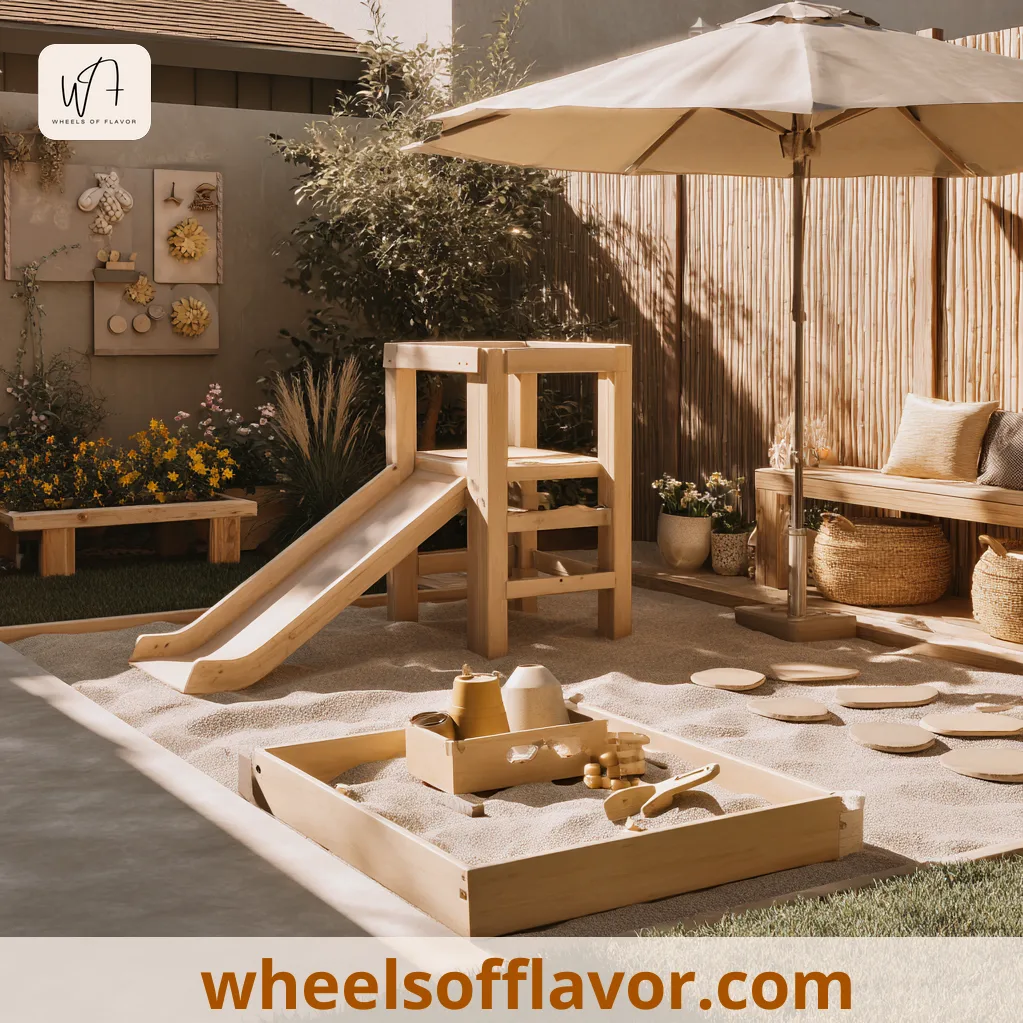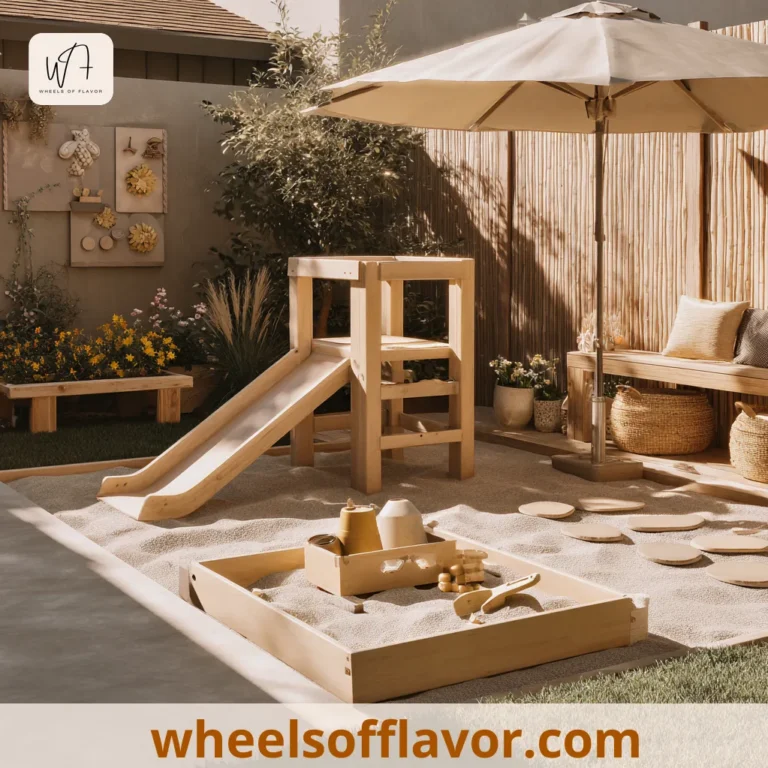
Creating a dedicated outdoor play area for toddlers is one of the most rewarding investments you can make in your child’s development and happiness. In today’s screen-heavy world, providing a safe, engaging space where little ones can explore, imagine, and burn off energy is more important than ever. Outdoor play fosters physical coordination, social skills, and a lifelong love for nature. From boosting creativity to improving mood, the benefits are endless. In this article, we’ll dive into practical and inspiring outdoor play area ideas for toddlers that cater to various spaces and budgets. Whether you have a sprawling backyard or a cozy balcony, you’ll find solutions to transform any area into a toddler paradise. Let’s explore how simple elements like sand, water, and natural materials can turn ordinary spaces into extraordinary adventures. Remember, the goal isn’t perfection—it’s about creating a space where your toddler feels free to learn and laugh. For more insights on child-friendly home setups, check out this guide from Parents.com. Ready to get started? Let’s unlock the potential of your outdoor space!
Essential Elements for a Safe Outdoor Play Area for Toddlers
Safety is the cornerstone of any successful outdoor play area for toddlers. Start by choosing soft, impact-absorbing surfaces like rubber mulch, sand, or grass to cushion falls. Avoid hard materials like concrete or gravel in play zones. Next, ensure all play structures are age-appropriate and securely anchored. For example, low-height slides, small climbing frames with handrails, and swing sets with bucket seats are ideal. Fencing is crucial—install a sturdy, child-proof gate to prevent wandering and define the play space clearly. Include shaded areas using umbrellas, pergolas, or natural tree cover to protect from sun exposure, and always have water sources nearby for hydration. Storage solutions like weather-resistant bins keep toys organized and reduce tripping hazards. Incorporate simple, open-ended toys like balls, buckets, and ride-on vehicles to encourage imaginative play without overwhelming clutter. Regularly inspect equipment for wear and tear, such as loose bolts or splintered wood. By prioritizing safety, you create a worry-free environment where toddlers can thrive. For budget-friendly tips, explore our related post on DIY and Budget-Friendly Decor. Remember, a safe play area not only prevents accidents but also builds confidence in young explorers.
Creative Outdoor Play Area Ideas for Toddlers Using Natural Materials
Natural materials offer endless possibilities for enriching outdoor play area ideas for toddlers. Start with a sandbox filled with clean, fine sand—add scoops, molds, and small shovels to promote sensory play and fine motor skills. Incorporate water features like a shallow kiddie pool or a DIY water table made from a plastic storage bin, where toddlers can splash, pour, and experiment with floating objects. Use logs, stones, and tree stumps to create simple balancing paths or stepping stones, encouraging physical development and coordination. Plant a small garden with child-friendly vegetables or flowers; toddlers love digging, watering, and watching plants grow, which teaches patience and responsibility. Build a mud kitchen using old pots, pans, and utensils—this messy play fosters creativity and connects kids to nature. Add elements like wind chimes, bird feeders, or a bug hotel to spark curiosity about wildlife. If space allows, include a grassy hill for rolling or a gentle slope for crawling. These ideas are not only affordable but also eco-friendly, reducing the need for plastic toys. For more inspiration on natural decor, visit wheelsofflavor.com/natural-play-spaces. By blending play with nature, you help toddlers develop a deeper appreciation for the outdoors while keeping them engaged for hours.
Budget-Friendly DIY Outdoor Play Area Ideas for Toddlers
You don't need a huge budget to create an amazing outdoor play area for toddlers—DIY projects can be both fun and cost-effective. Start with repurposed items: an old tire can become a sandbox or swing, while pallets can be transformed into a small playhouse or bench. For a simple obstacle course, use hula hoops for jumping, ropes for balancing, and cardboard boxes for tunnels. Paint a hopscotch or alphabet grid on the ground with non-toxic chalk paint to combine learning with physical activity. Build a sensory wall by attaching various textures—like fabric scraps, bubble wrap, or metal lids—to a fence or board for tactile exploration. If you're handy, construct a basic climbing frame from sturdy wood, ensuring it's low to the ground and rounded to prevent injuries. Upcycle containers into storage for toys, and use old bedsheets to create a makeshift fort or shade structure. Involve your toddler in the process—let them help with painting or decorating to build excitement. These projects not only save money but also allow for customization to fit your space and your child's interests. For step-by-step guides, check out our DIY and Budget-Friendly Decor category. Remember, the best play areas evolve with your child, so start small and add elements over time. With a little creativity, you can design a space that sparks joy without breaking the bank.
Conclusion
In summary, designing an outdoor play area for toddlers is all about blending safety, creativity, and fun to support their growth and happiness. We've covered essential safety tips, the beauty of using natural materials, and budget-friendly DIY ideas that anyone can implement. By focusing on these aspects, you can create a space that encourages exploration, physical activity, and imaginative play, all while fostering a connection to the outdoors. Remember, the best play areas are adaptable—they grow with your child and reflect their evolving interests. As you move forward, consider involving your toddler in small updates, like planting new flowers or adding seasonal decorations, to keep the space engaging. Looking ahead, trends in outdoor play are leaning towards sustainability and inclusivity, so explore options like accessible designs or eco-friendly materials. For more inspiration, dive into our Room Specific Decor guides. Start today with one simple project, and watch as your outdoor area becomes a cherished part of your family's routine. Happy playing!
Frequently Asked Questions
Q: What are the key safety features to include in an outdoor play area for toddlers?
Key safety features include soft, impact-absorbing surfaces like rubber mats or sand, securely anchored play equipment with no sharp edges, and a fenced area to prevent wandering. Always ensure structures are age-appropriate, with low heights and stable bases. Regular inspections for hazards like loose parts or wear are essential, along with shaded spots and access to water for hydration.
Q: How can I design an outdoor play area for toddlers in a small space?
For small spaces, focus on vertical or multi-use elements. Use wall-mounted sensory boards, foldable play mats, or compact sand and water tables. Incorporate portable items like bean bags or small ride-on toys that can be stored easily. A corner with a mini garden or a hanging swing can maximize space without clutter. DIY projects, like a pallet-based play nook, are ideal for fitting into tight areas while still offering engaging activities.
Q: What budget-friendly materials are best for a toddler outdoor play area?
Budget-friendly materials include repurposed items like old tires for swings or sandboxes, pallets for structures, and natural elements such as sand, logs, and stones. Non-toxic paint for ground games, second-hand play equipment, and DIY projects using household items are great options. Focus on durability and safety—for example, use weather-resistant wood and soft fall surfaces from affordable sources like rubber mulch or grass.

